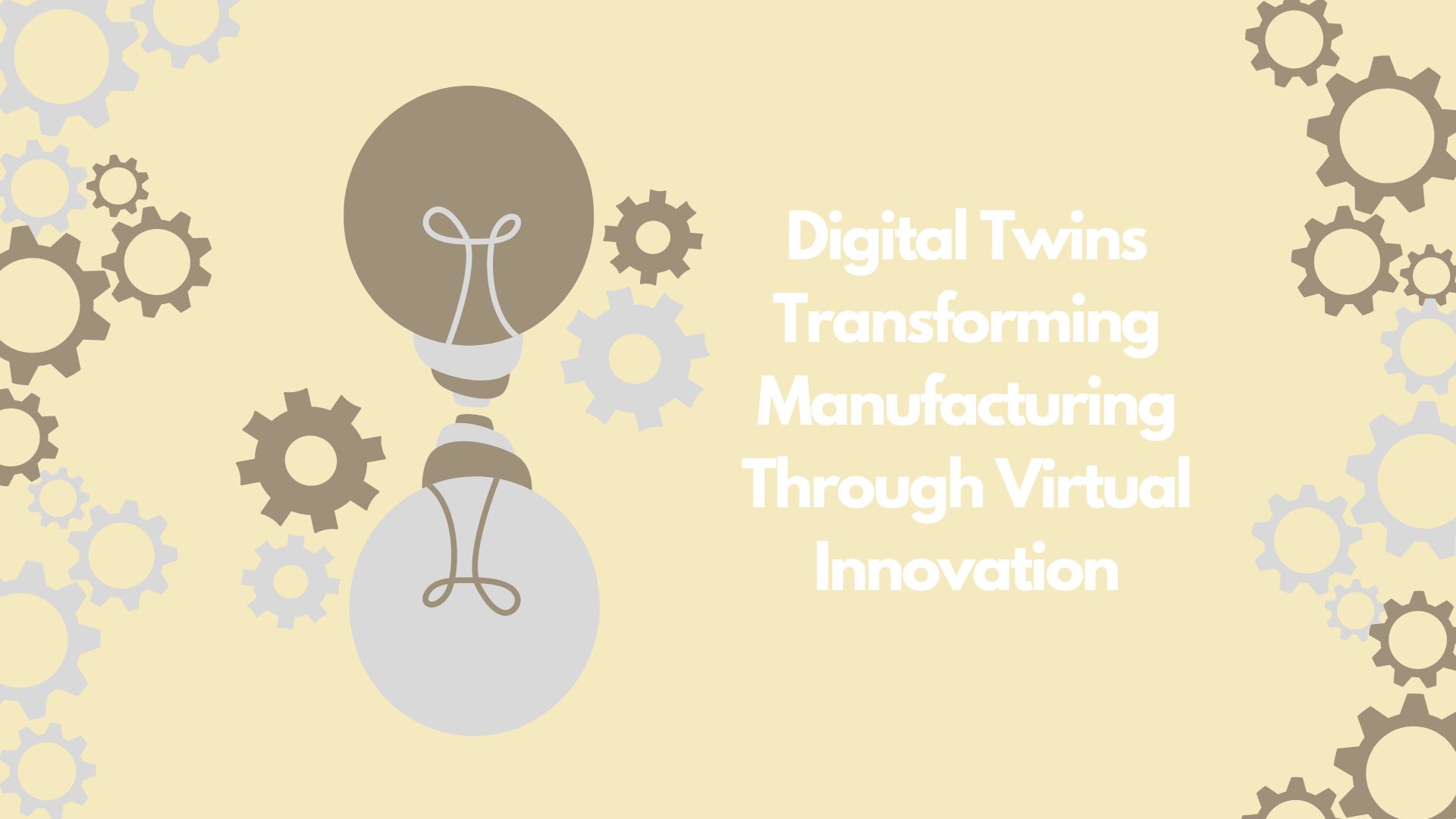Introduction
The concept of digital twins is revolutionizing the manufacturing industry. By creating virtual replicas of physical assets, processes, or systems, manufacturers can optimize operations, enhance product development, and improve decision-making. This blog explores the benefits of digital twins, their applications in manufacturing, and how companies can implement this technology to gain a competitive edge.
Understanding Digital Twins
A digital twin is a dynamic, virtual representation of a physical object or system across its lifecycle, using real-time data to simulate performance, identify issues, and predict outcomes. Digital twins integrate data from various sources, including sensors, IoT devices, and enterprise systems, to create a comprehensive digital model.
Benefits of Digital Twins in Manufacturing
- Enhanced Product Development: Digital twins enable manufacturers to simulate and test new products in a virtual environment before physical prototypes are created, reducing development time and costs.
- Improved Operational Efficiency: By monitoring and analyzing real-time data, digital twins help optimize production processes, reduce downtime, and improve resource utilization.
- Predictive Maintenance: Digital twins can predict equipment failures and maintenance needs, allowing manufacturers to address issues before they cause disruptions, thereby reducing maintenance costs and extending equipment lifespan.
- Quality Control: Virtual simulations help identify defects and optimize quality control processes, ensuring consistent product quality and reducing waste.
- Supply Chain Optimization: Digital twins provide visibility into supply chain operations, helping manufacturers manage inventory, optimize logistics, and improve overall supply chain efficiency.
- Sustainability: By optimizing processes and reducing waste, digital twins contribute to more sustainable manufacturing practices.
Applications of Digital Twins in Manufacturing
- Product Design and Development: Digital twins allow for virtual testing and validation of new products, accelerating the development cycle and reducing the need for physical prototypes.
- Production Planning and Scheduling: Simulating production processes helps manufacturers optimize planning and scheduling, improving efficiency and reducing bottlenecks.
- Asset Management: Monitoring the real-time performance of equipment and machinery through digital twins enables predictive maintenance and efficient asset management.
- Process Optimization: Digital twins help identify inefficiencies and optimize manufacturing processes, leading to cost savings and improved productivity.
- Supply Chain Management: By providing a comprehensive view of the supply chain, digital twins enable better demand forecasting, inventory management, and logistics optimization.
- Worker Training and Safety: Virtual simulations can be used for training purposes, allowing workers to practice tasks in a safe, controlled environment. Digital twins can also help identify and mitigate safety risks in the workplace.
Implementing Digital Twins in Manufacturing
- Assess Needs and Objectives: Identify the specific needs and objectives that digital twins will address within your organization, such as improving product quality, reducing downtime, or optimizing the supply chain.
- Invest in Technology: Implement the necessary technologies, including IoT devices, sensors, data analytics platforms, and simulation software, to create and maintain digital twins.
- Data Integration: Ensure seamless integration of data from various sources, such as sensors, machines, and enterprise systems, to create accurate and comprehensive digital twins.
- Develop Expertise: Build a team with expertise in digital twin technology, data analytics, and simulation to effectively implement and manage digital twins.
- Pilot Projects: Start with pilot projects to test the effectiveness of digital twins in specific areas of your manufacturing operations. Use the insights gained to refine and expand the implementation.
- Continuous Improvement: Continuously monitor and analyze the performance of digital twins, using the data to drive ongoing improvements and innovations in manufacturing processes.
Case Study: Digital Twins in Action
A leading aerospace manufacturer, [Company Name], implemented digital twin technology to enhance its product development and manufacturing processes. Key initiatives included:
- Virtual Prototyping: Using digital twins to create virtual prototypes of aircraft components, reducing the need for physical prototypes and accelerating the development cycle.
- Predictive Maintenance: Monitoring real-time data from sensors installed on machinery to predict maintenance needs and prevent equipment failures, resulting in a 20% reduction in downtime.
- Process Optimization: Simulating production processes to identify inefficiencies and optimize workflows, leading to a 15% increase in productivity and a 10% reduction in production costs.
- Supply Chain Visibility: Implementing digital twins to gain real-time visibility into supply chain operations, improving demand forecasting and inventory management.
As a result of these initiatives, [Company Name] achieved significant improvements in efficiency, product quality, and overall operational performance, positioning itself as a leader in the aerospace industry.
Conclusion
Digital twin technology is transforming the manufacturing industry by providing powerful tools for optimizing operations, enhancing product development, and improving decision-making. By leveraging digital twins, manufacturers can achieve greater efficiency, reduce costs, and drive innovation. As the adoption of digital twin technology continues to grow, it will play a crucial role in shaping the future of manufacturing, offering unprecedented opportunities for growth and competitiveness.









